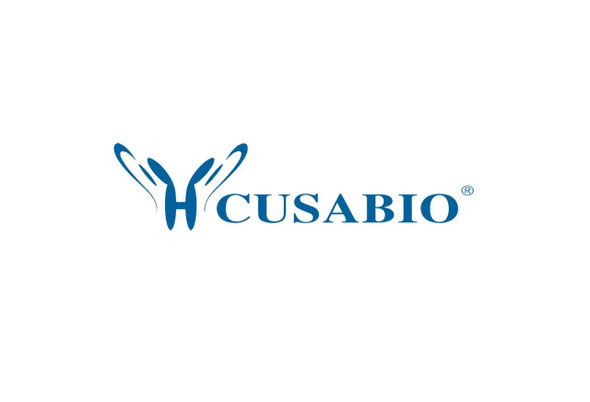Cusabio Human Recombinants
Recombinant Human BPI fold-containing family A member 1 (BPIFA1) | CSB-CF868269HU
- SKU:
- CSB-CF868269HU
- Availability:
- 18 - 23 Working Days
Description
Recombinant Human BPI fold-containing family A member 1 (BPIFA1) | CSB-CF868269HU | Cusabio
Alternative Name(s): Lung-specific protein X Nasopharyngeal carcinoma-related protein Palate lung and nasal epithelium clone protein Secretory protein in upper respiratory tracts Short PLUNC1 Short name: SPLUNC1 Tracheal epithelium-enriched protein Von Ebner protein Hl
Gene Names: BPIFA1
Research Areas: Cancer
Organism: Homo sapiens (Human)
AA Sequence: QFGGLPVPLDQTLPLNVNPALPLSPTGLAGSLTNALSNGLLSGGLLGILENLPLLDILKPGGGTSGGLLGGLLGKVTSVIPGLNNIIDIKVTDPQLLELGLVQSPDGHRLYVTIPLGIKLQVNTPLVGASLLRLAVKLDITAEILAVRDKQERIHLVLGDCTHSPGSLQISLLDGLGPLPIQGLLDSLTGILNKVLPELVQGNVCPLVNEVLRGLDITLVHDIVNMLIHGLQFVIKV
Source: in vitro E.coli expression system
Tag Info: N-terminal 6xHis-SUMO-tagged
Expression Region: 20-256aa
Sequence Info: Full Length of Mature Protein
MW: 40.7 kDa
Purity: Greater than 90% as determined by SDS-PAGE.
Relevance: Plays a role in the innate immune responses of the upper airways. Reduces the surface tension in secretions from airway epithelia and inhibits the formation of biofilm by pathogenic Gram-negative bacteria, such as P.aeruginosa and K.pneumoniae. Binds bacterial lipopolysaccharide (LPS). Negatively regulates proteolytic cleavage of SCNN1G, an event that is required for activation of the epithelial sodium channel (ENaC), and thereby contributes to airway surface liquid homeostasis and proper clearance of mucus. Plays a role in the airway inflammatory response after exposure to irritants. May attract macrophages and neutrophils. May be associated with tumor progression.
Reference: "Isolation of a novel human lung-specific gene, LUNX, a potential molecular marker for detection of micrometastasis in non-small-cell lung cancer."Iwao K., Watanabe T., Fujiwara Y., Takami K., Kodama K., Higashiyama M., Yokouchi H., Ozaki K., Monden M., Tanigami A.Int. J. Cancer 91:433-437(2001)
Storage: The shelf life is related to many factors, storage state, buffer ingredients, storage temperature and the stability of the protein itself. Generally, the shelf life of liquid form is 6 months at -20?/-80?. The shelf life of lyophilized form is 12 months at -20?/-80?.
Notes: Repeated freezing and thawing is not recommended. Store working aliquots at 4? for up to one week.
Function: Plays a role in the innate immune responses of the upper airways. Reduces the surface tension in secretions from airway epithelia and inhibits the formation of biofilm by pathogenic Gram-negative bacteria, such as P.aeruginosa and K.pneumoniae. Binds bacterial lipopolysaccharide (LPS). Negatively regulates proteolytic cleavage of SCNN1G, an event that is required for activation of the epithelial sodium channel (ENaC), and thereby contributes to airway surface liquid homeostasis and proper clearance of mucus. Plays a role in the airway inflammatory response after exposure to irritants. May attract macrophages and neutrophils. May be associated with tumor progression.
Involvement in disease:
Subcellular Location: Secreted
Protein Families: BPI/LBP/Plunc superfamily, Plunc family
Tissue Specificity: Lung, upper airways and nasopharyngeal regions, including trachea and nasal epithelium. Specifically expressed in the secretory ducts and submucosal glands of tracheobronchial tissues. Highest expression in the trachea and progressive decrease from proximal (bronchial) to distal (bronchiolar) airways. Also expressed in lung cancers and some other types of cancer.
Paythway:
Form: Liquid or Lyophilized powder
Buffer: If the delivery form is liquid, the default storage buffer is Tris/PBS-based buffer, 5%-50% glycerol. If the delivery form is lyophilized powder, the buffer before lyophilization is Tris/PBS-based buffer, 6% Trehalose, pH 8.0.
Reconstitution: We recommend that this vial be briefly centrifuged prior to opening to bring the contents to the bottom. Please reconstitute protein in deionized sterile water to a concentration of 0.1-1.0 mg/mL.We recommend to add 5-50% of glycerol (final concentration) and aliquot for long-term storage at -20?/-80?. Our default final concentration of glycerol is 50%. Customers could use it as reference.
Uniprot ID: Q9NP55
HGNC Database Link: HGNC
UniGene Database Link: UniGene
KEGG Database Link: KEGG
STRING Database Link: STRING
OMIM Database Link: OMIM









